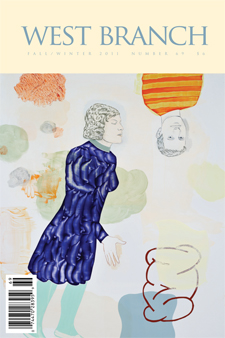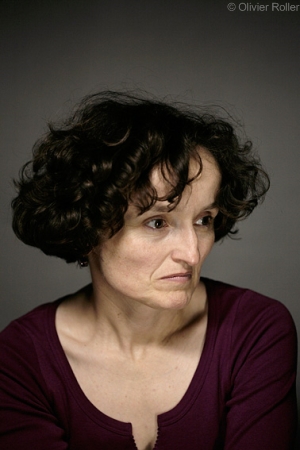The latest issue of Bucknell’s estimable literary journal West Branch is now out, featuring among others Todd Fredson, a poet in my program at USC, and my translation of Marie-Hélène Lafon’s short story “Moles” from her 2006 collection Organs:
They never see the moles. They wonder what they’re like, and imagine them hirsute and sightless, skeletons tiny and pliable, fatty beneath plum or dark purple fur, with short, speedy feet. These feet would be webbed. The moles would have no ears and almost no eyes, just two pale slits, they’d have other means of perceiving, unusual, very underground measures, unprecedented senses. Their flesh would be soft and their supple bodies hug the curves of their dark corridors, exhausting corridors, forever rebegun, threatened by cataclysmic cave-ins, compromising fissures, floods, rampant muck, sudden mudslides, total collapse. A mole’s work is insuperable, the upkeep of corridors, the burden of the moles, their curse, is impossible. The boys can’t picture the mouths of moles, their muzzles, their snouts, words fail them, have they pink tongues, hard gray palates, have they teeth to gnaw at roots, they’d like broad flat beaver’s teeth for the moles, which are first-rate tools for earthwork but don’t fit the moles’ abbreviated shapes. The only sleep moles manage is shot through with ceaseless twitching, to sleep they gather themselves into quivering heaps, the moles are afraid, they live in fear and never for long, and then they rot in the dark earth that is their element; that much at least the boys know. They have earth in their bodies, they eat it.
Lafon’s prose is obsessive and compelling but, rather than deriving from a neurotic intellect, remains palpable and physical, rooted in a moody rurality. In such parts much is unsaid and even more unknown; she brings their full weight to bear on her characters and readers. Lafon herself hails from the Cantal, part of the region of Auvergne in the Massif Central. When asked in a 2009 interview how she got her start as a writer, she said:
“I waited a long time. I was thirty-four, it was the autumn of 1996, and I felt like I’d missed my life, stood to one side; I was like one of those cows who watch the trains go by, and cows never board the trains. I sat down at my table and began writing Liturgy, the short piece that would lend its title to my second published book. I boarded the train of my life, and have never stepped off since. Not that writing is all of life, all my life; but I will readily avow that for me writing is the epicenter of a vital earthquake, or that I never feel so intensely alive as when I write.”

